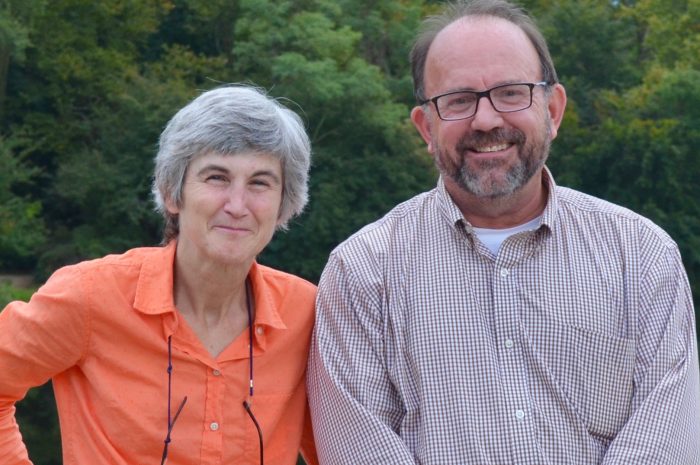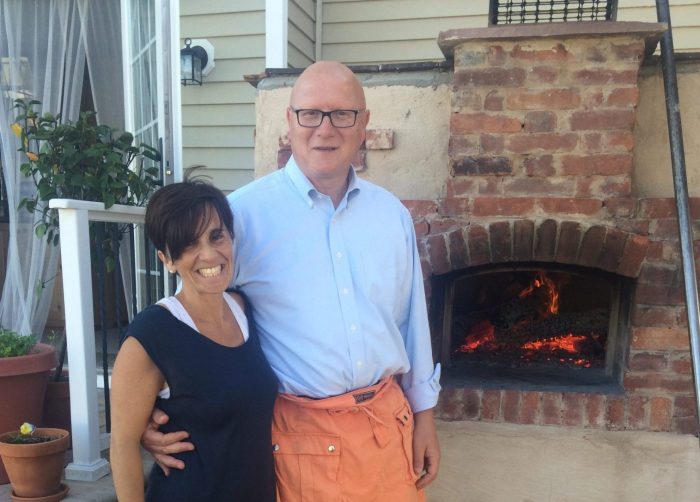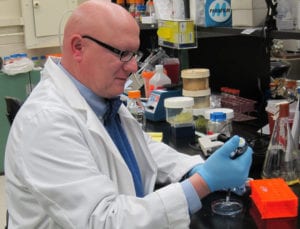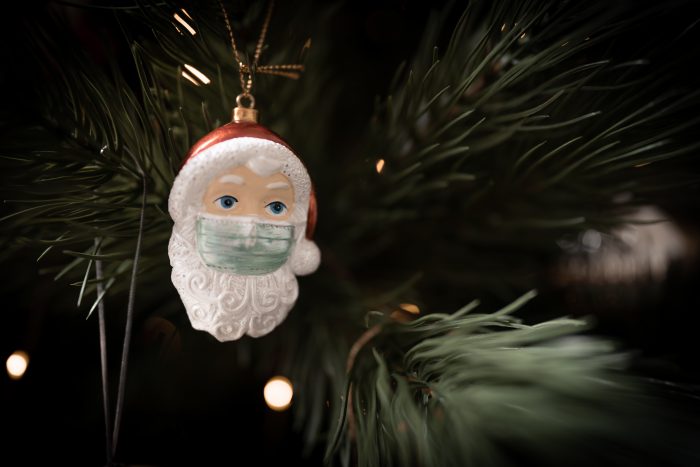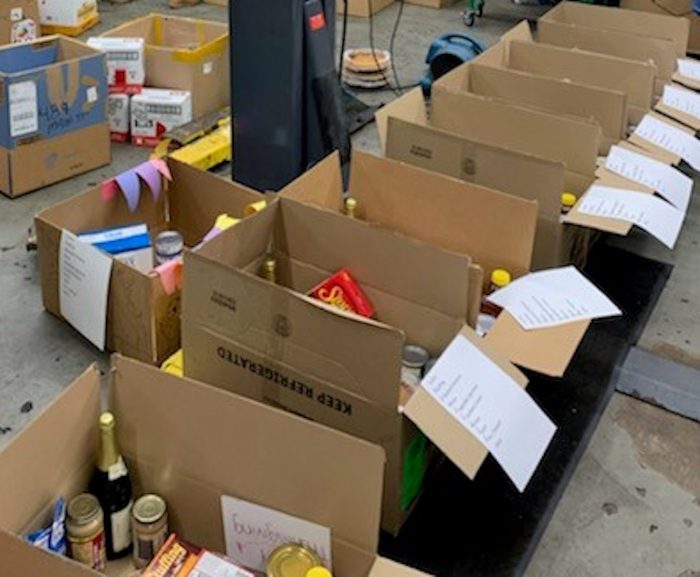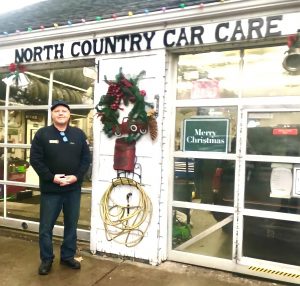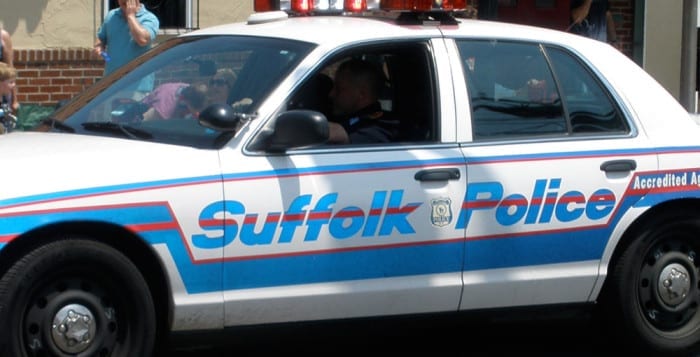George Hoffman is a familiar face from Setauket Harbor to Brookhaven Town Hall. Intending to make a difference in the Three Village area each day, he revitalized the civic association, co-founded the Setauket Harbor Task Force, helped head up the Route 25A Citizen Advisory Committee and more.
For someone who has such a presence in the community, people are surprised to hear that he hasn’t lived here for decades. Hoffman moved to East Setauket after he met his wife, Maria Hoffman, former chief of staff for state Assemblyman Steve Englebright (D-Setauket).
In a 2019 TBR News Media interview, the Hoffmans said they married in 2009 in Frank Melville Memorial Park. A couple of years before they tied the knot, the two met through Englebright’s office. George Hoffman, who had a career in the political field for 35 years, was living on the South Shore working with former county Legislator Wayne Prospect (D-Dix Hills) when he first met Englebright. One day when he saw Maria at the office, she asked him to take a walk in the park and soon after they started dating.
Charles Lefkowitz, president of the Three Village Chamber of Commerce, met Hoffman more than 20 years ago when both of them held government jobs. The chamber president said Hoffman’s passion for the Three Village community combined with his experience in politics, drive to protect the environment and also understanding the importance of economic viability are fitting for the area.
“He has the ability to work with town, county, state and federal officials,” Lefkowitz said. “George understands how government works to the benefit of the not-for-profits he’s involved in. His biggest attribute is his ability to work in a bipartisan manner for the benefit of the community.”
Laurie Vetere, one of the co-founders of the harbor task force, has known Hoffman since they both started in the civic association and calls him a driving force.
She said he steps up where needed and is always dependable, adding he attends town board meetings and coordinates meetings with the county and Department of Environmental Conservation to speak about the health of local harbors on behalf of the task force.
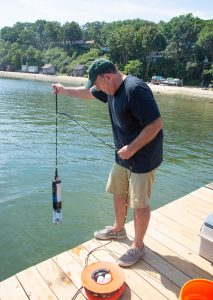
“He’s always pretty much prepared with everything he does,” she said. “He puts the time and effort in, because he really wants to do good work, and he just values being proficient at what he does.”
Vetere added that Hoffman has learned environmental science and marine science information that he applies to the organization’s water testing activities that the task force does for Save the Sound and a sugar kelp project with the Moore foundation
“We have a great group of volunteers on our board, but George has really taken up the whole heavy load, and he’s learned so much science,” she said.
Lefkowitz counts Hoffman being one of the founding members of the Setauket Harbor Task Force and implementing a water quality testing program among his greatest achievements.
“Becoming a steward of Setauket Harbor, I think that’s one of his greatest accomplishments as well as the revitalization of the civic association,” Lefkowitz said.
Hoffman became president of the civics earlier this year, taking over for Jonathan Kornreich who was elected as Brookhaven councilman (D-Stony Brook) and stepped down as civic president. Both Lefkowitz and Herb Mones, a former civic president, credit Hoffman along with Kornreich with revitalizing the civic association as members began to age out about a decade ago. Lefkowitz said Hoffman always works with the business community, which is important because years ago the chamber and civic organizations were at odds with each other.
“George was one of the individuals that extended the olive branch and built that bridge,” Lefkowitz said.
Mones said soon after Hoffman moved to Setauket “he immediately wanted to be involved in the issues that were going on inside the community.” Mones described his fellow civic member as “an active advocate for the community over and over again.”
With Hoffman’s former role in government, Mones said he knows all the elected officials and how to the system works.
“He can give insight as to how to best navigate the desirable outcome for the community with some of the different issues that occur,” Mones said.
Kornreich agreed and said Hoffman’s unique skill set makes him effective on the civic and a “fierce advocate for the environment.”
“He’s been successful in getting literally hundreds of thousands of dollars directed toward environmental conservation, environmental remediation and protection,” Kornreich said.
The councilman added in addition to being a passionate activist, Hoffman is “also a clear-eyed realist.”
Mones also credits Hoffman for heading up the Route 25A revitalization committee with Jane Taylor, executive director of the chamber, and added it was a difficult project.
“It’s such a complex issue trying to bring everybody together and plan the future with so many different interests and so many different voices,” Mones said. “It’s certainly not an enviable task. But, you know, he accepted that responsibility and has made it so that at least there’s an idea as to what we see is the best buildout along 25A as opposed to just kind of randomly allowing spot development wherever it occurs.”
The civic member also credits Hoffman not only for taking on Brookhaven issues, but also helping to join forces with Smithtown residents over the potential development of the Gyrodyne property in St. James. Mones said Hoffman was the first one to bring to the Town of Brookhaven’s attention how the buildout of the property, with a proposed sewage treatment plant, would affect the local area.
Mones said Hoffman has been the ideal choice to step in as president of the civic association.
“He enjoys the responsibility and the opportunity to give leadership on the different issues,” he said. “I have to commend him that he’s very affable in handling the different concerns and complaints and issues that come before him.”

